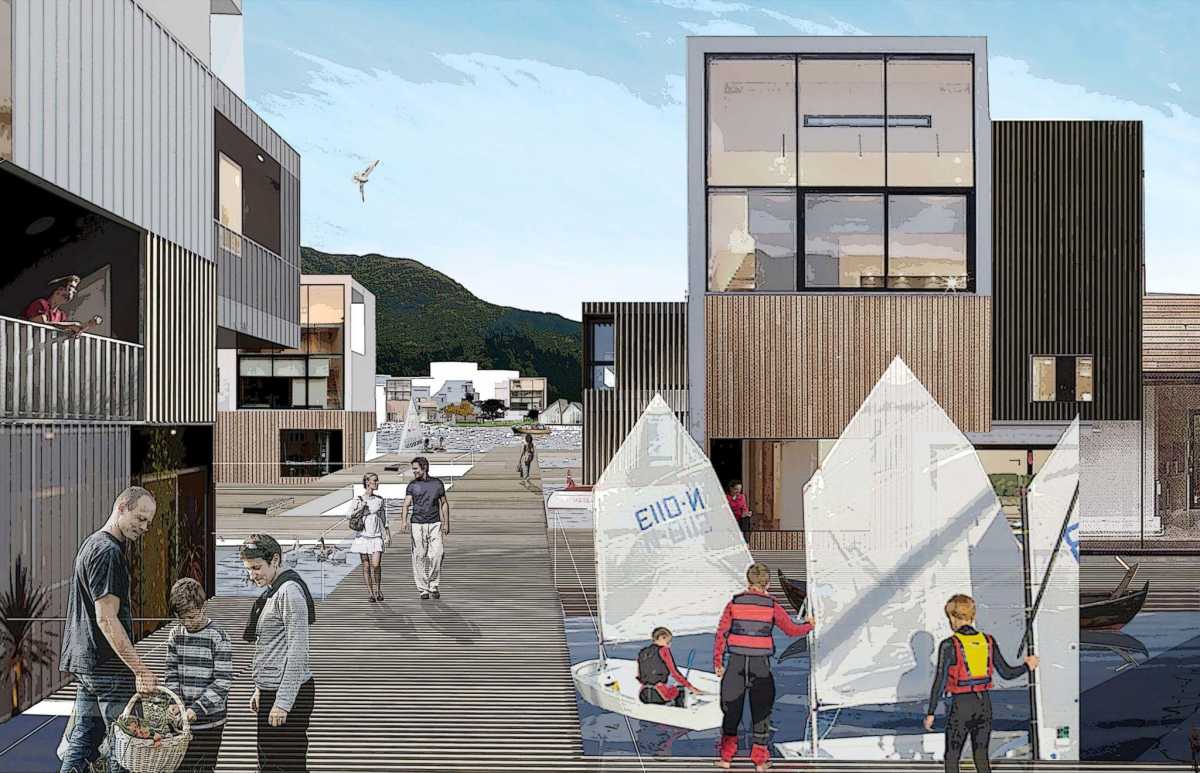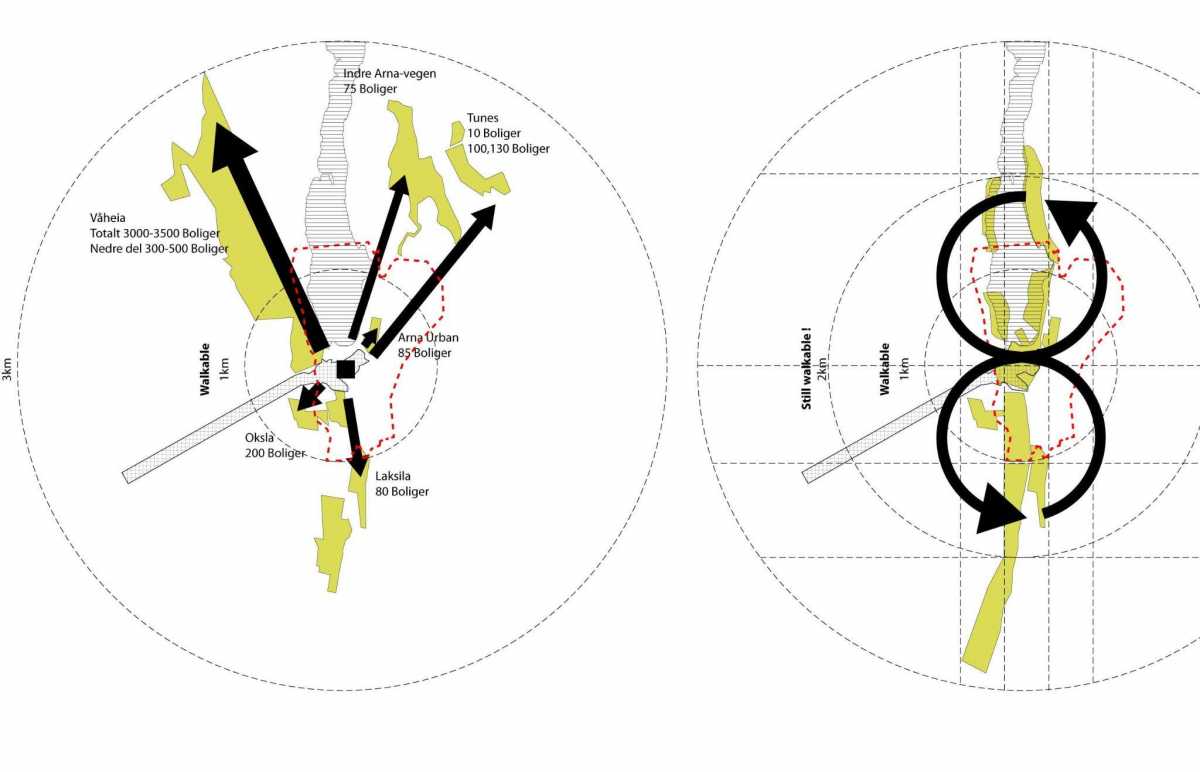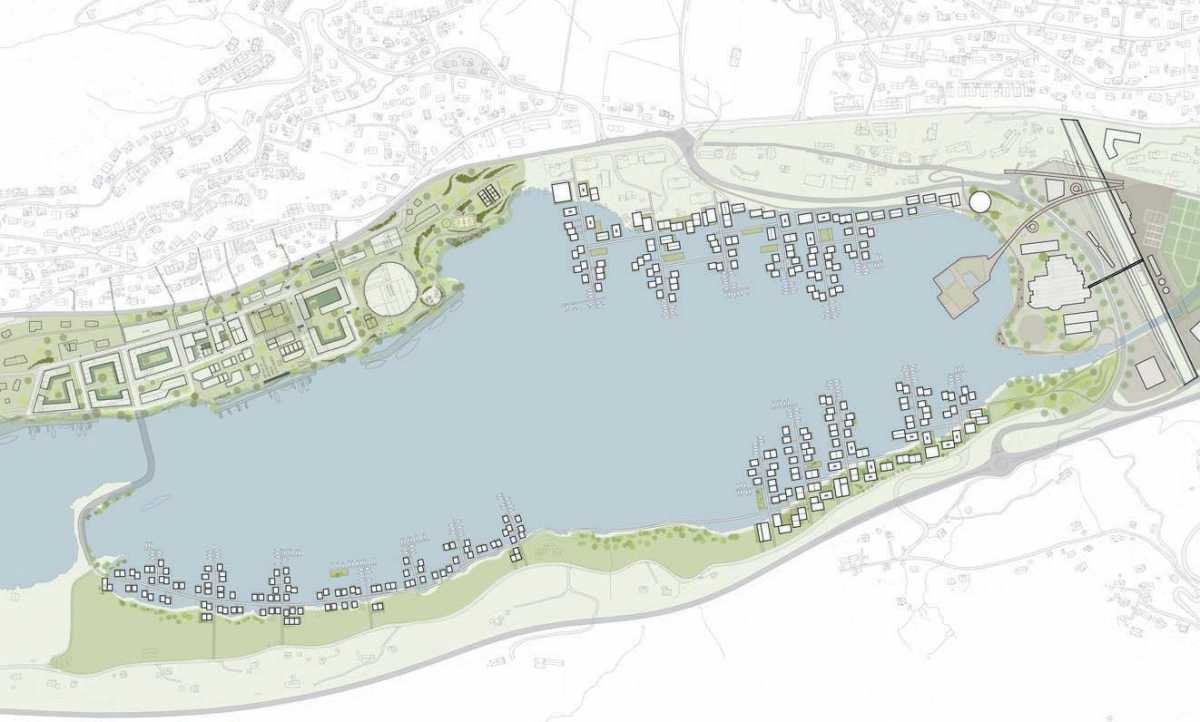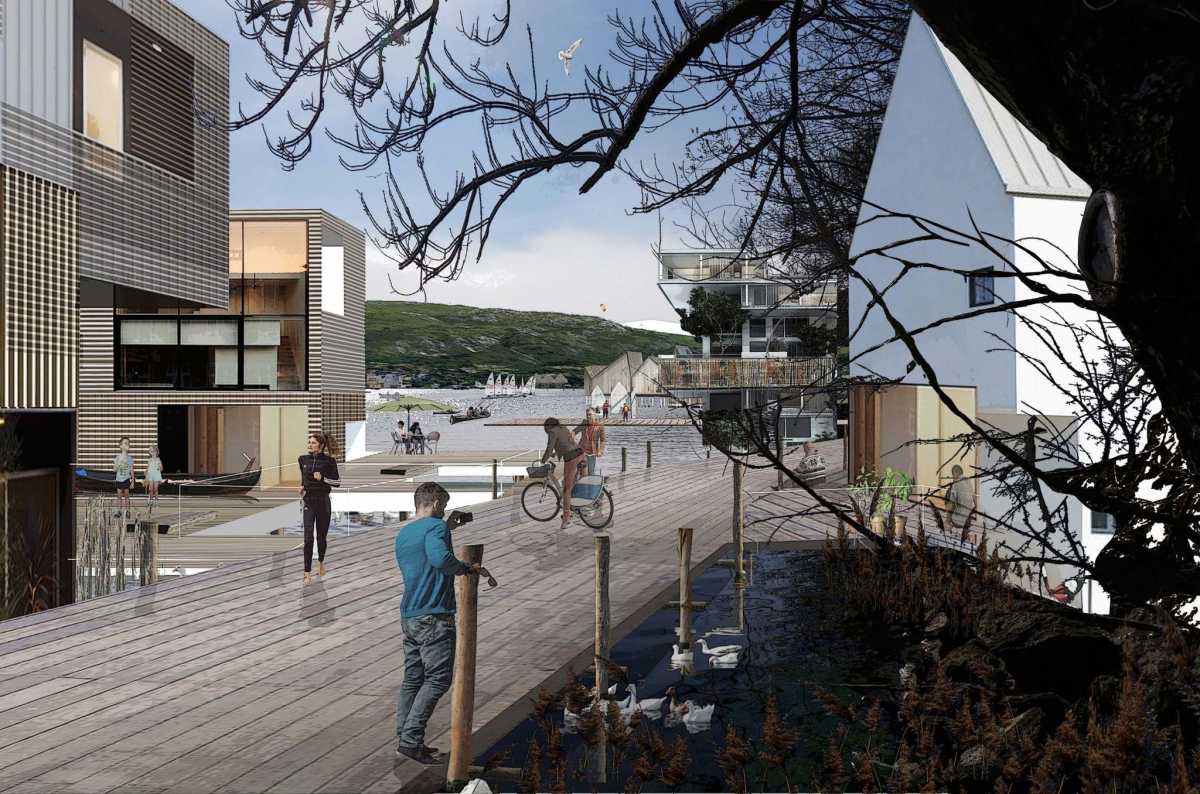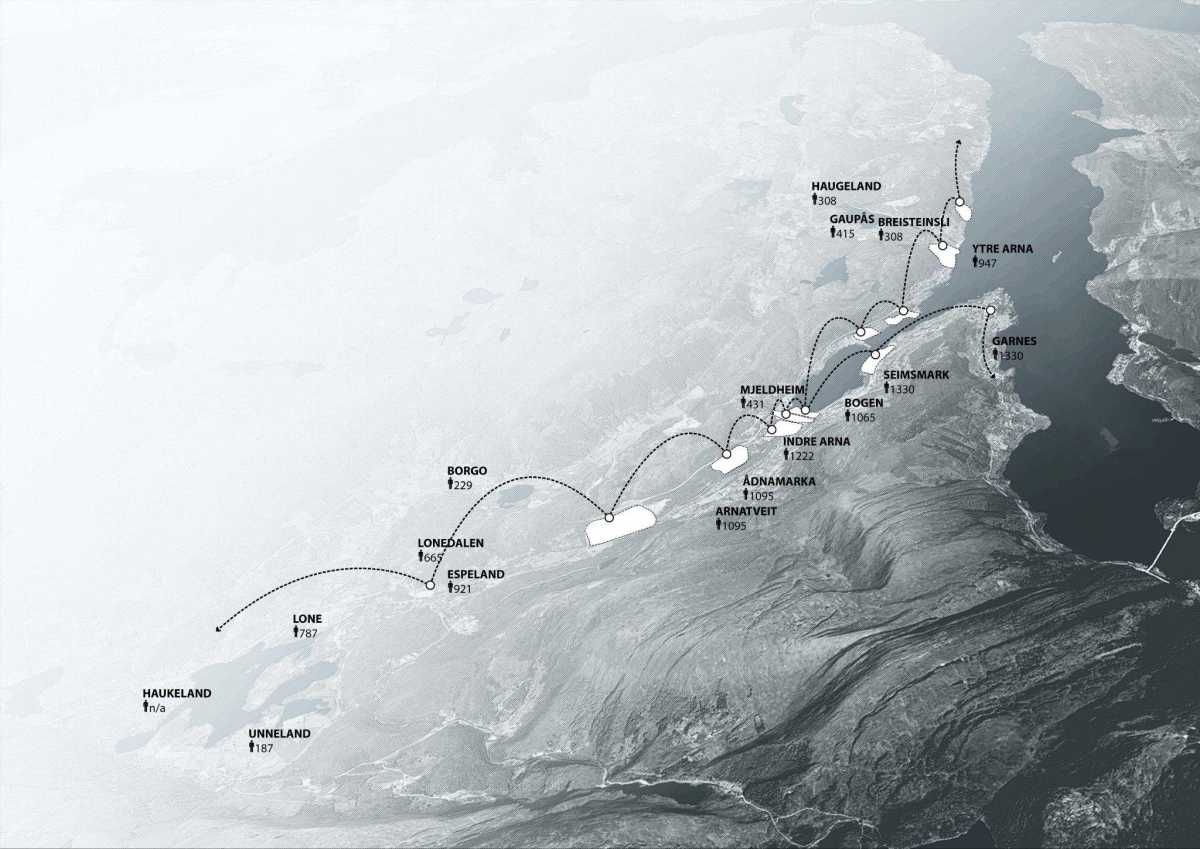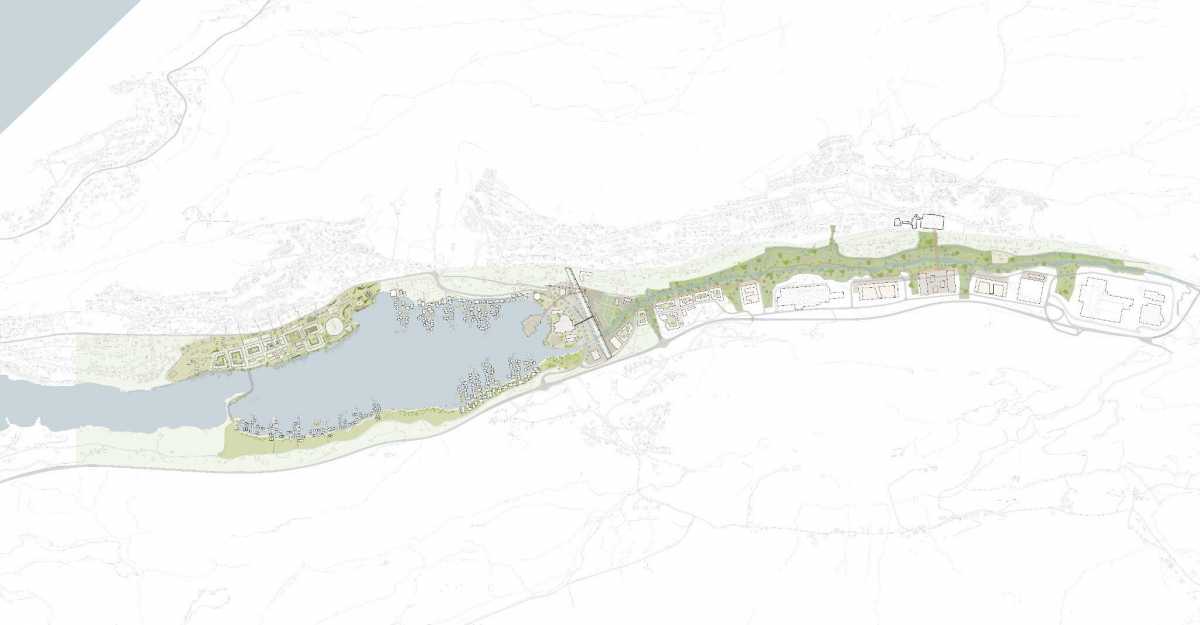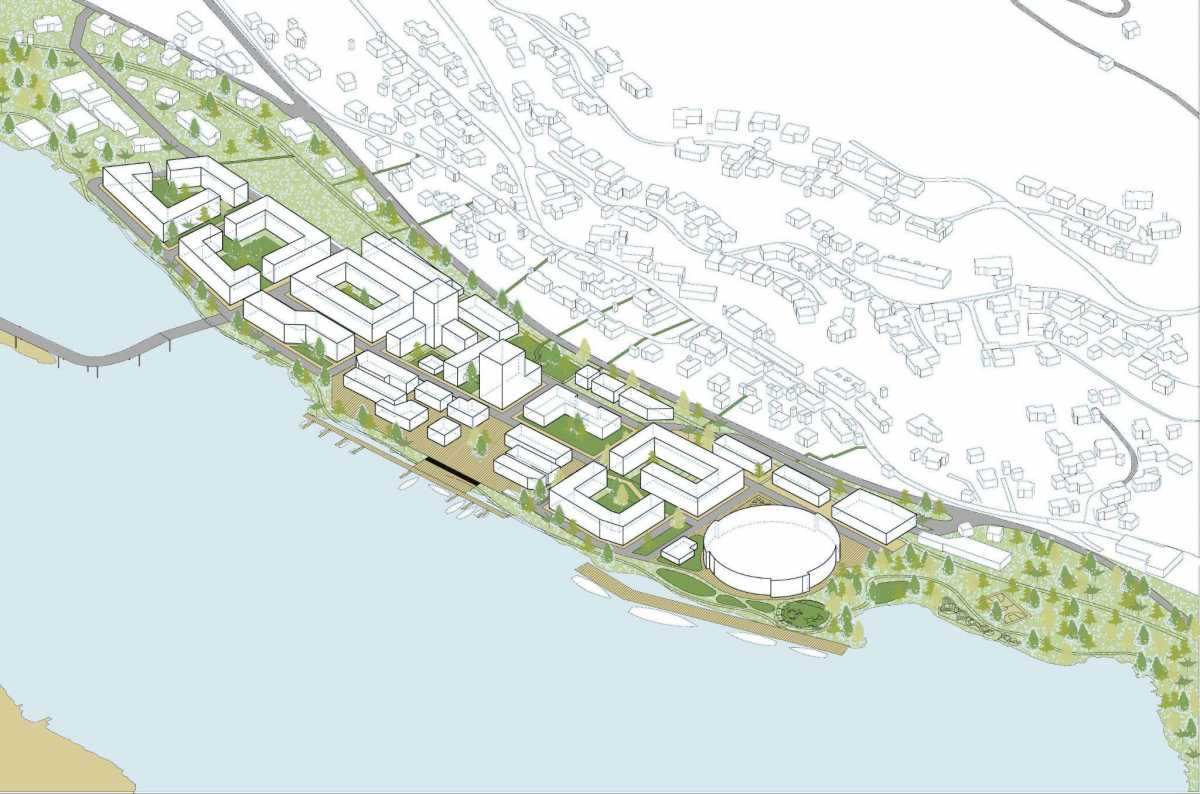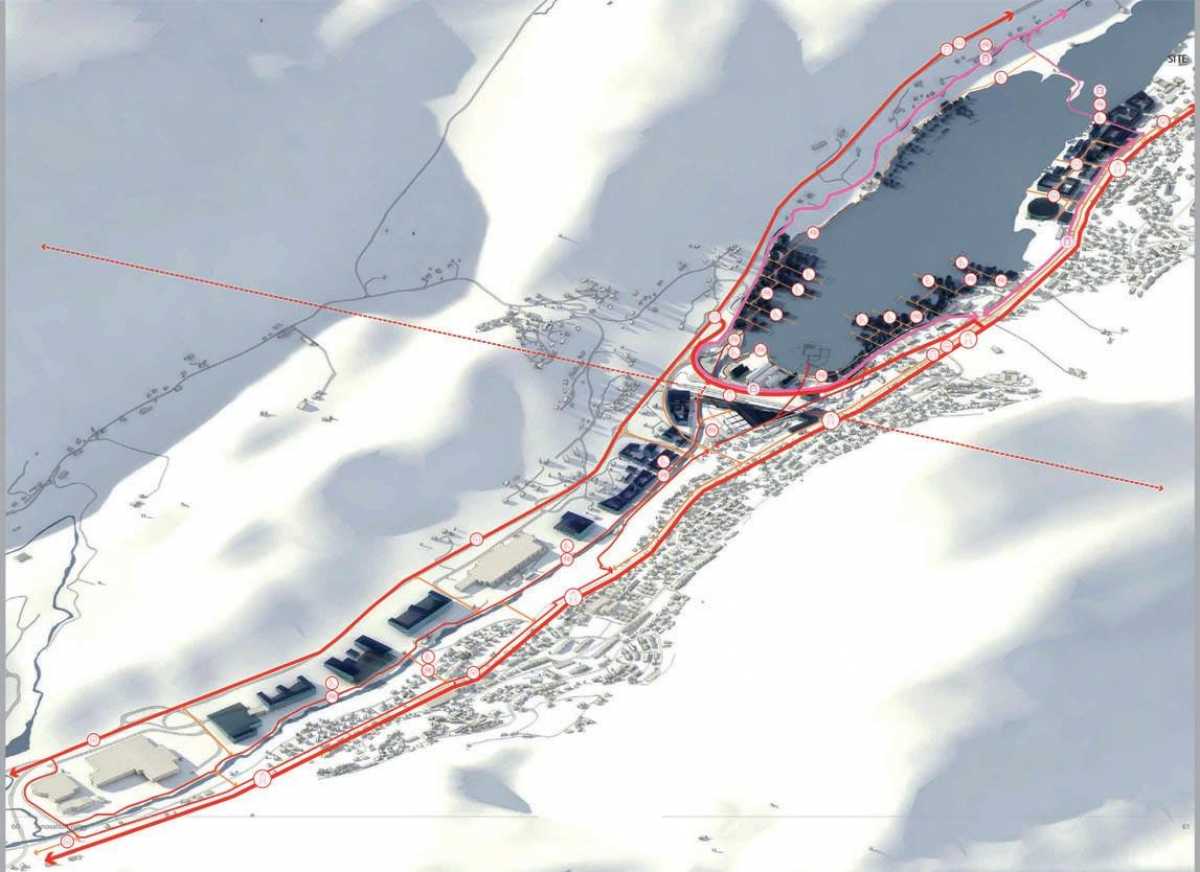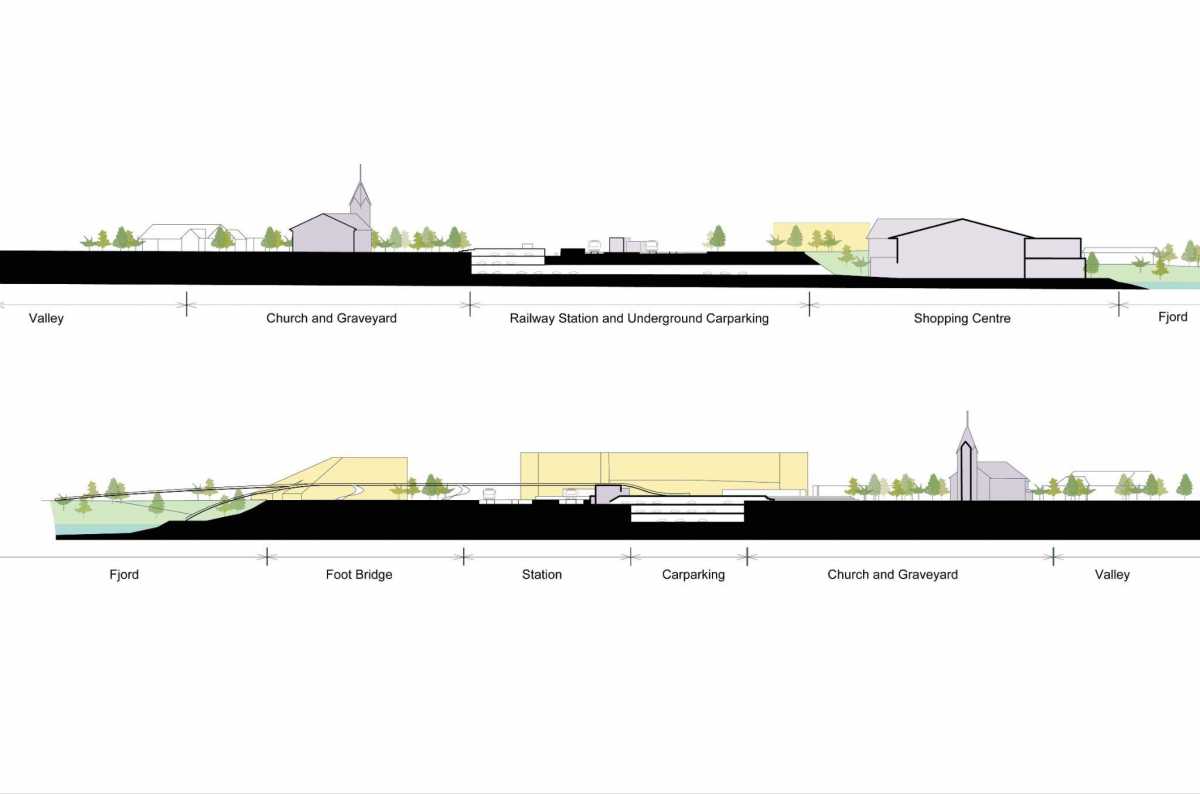Revitalising a City District by Dramatically Redefining its Relationship to its Waterfront
Studio Woodroffe Papa, in collaboration with 3RW Arkitekter, Jérôme Picard and Christian E. Mong were commissioned to design a 5000 home urban extension to the district of Arna. The area was once a prominent location for the textile industry attracting inhabitants to settle there. Norwegian clothes from wool to sweater were made here. Local factories supported a local economy and social life, making use of the water for functional and recreational means. However, for the last 40 years the population has remained the same. The area is not as attractive as Asane, Lagunen and Sandsli. There a few places of work and most housing is positioned on the ‘dark side’ of the mountain, receiving little sunlight in winter.
The main element of our urban framework is the “ring” that connects new housing, neighbourhood hubs and a mixed-use business district around Arna’s train station that connects to a linear workspace neighbourhood located in the river valley. The “ring” reinforces the existing qualities of the central areas and enriches them with attractive public and service-oriented functions. At the same time, it ensures maximum flexibility for future developments.
The result is a clear organizational structure with a clearly identifiable centres, orientated to the water. In the centre of the plan, clusters of floating housing are positioned to benefit from as much winter sun as possible. Within the adjacent clusters, new and existing buildings form new quarters around private or semi-public spaces. This creates a differentiated urban network of building volumes and open spaces.
- Arna Waterfront
- NOR, Arna
- Client
- Bergen City Council
- Programme
- 60,000 m2 residential space\
7500 m2 station hub\
8500 m2 retail and amenity space\
15,000 m2 workspace\
Site area: 80 ha\
Workscope: Concept Masterplan\
Status: Delivered\
Team: Studio Woodroffe Papa\ 3RW Arkitekter\ Jérôme Picard\ Christian E. Mong
Revitalising a City District by Dramatically Redefining its Relationship to its Waterfront
